We had friends visiting us in August 2008 so we took the opportunity of visiting one of the top natural attractions of Jordan, Dana Nature Reserve. Basically, millions of years ago the surface of the Earth ruptured round these parts creating a huge rift valley. The land on the west went down and the land on the east went up. On the west you’ve got the Dead Sea valley and the lowest place on Earth. On the East you’ve got the desert plateau stretching to Saudi Arabia and Iraq. Over millions of years, water flowed from the high plateau to the Dead Sea forming some huge gorges – or wadis. Wadi Mujib is one which is covered on other pages. Near Dana there a quite a few smaller ones. And where these Wadis are, there is an amazing diversity of life and beautiful landscapes and so in its wisdom, the Jordanian Government made the area around Dana a nature reserve.
Except we didn’t go there. Just south of Dana the landscape is just as breathtaking and unspoiled but we were told that there was a little privately run campsite which had much more character than the official Dana one and so that is where we headed…
Here we are on the way on the Desert Highway. There are still plenty of bedouin in the desert herding their sheep, goats and a few camels.


Just South of the village of Qadisiyya on the King’s Highway you will see a sign for Nawatef Camp. This little place was started only in 2007 by two brothers – Ali and Rasmi. At the time of writing there were only six small huts along with a toilet block and a restaurant block. The rooms were fine but basic. Cement along the base but with a Bedouin style tent top. This was perfect as it was still quite cool during the day and not too cold at night.


However the best thing about the camp was the situation – it overlooked an amazing gorge and beyond to the Dead Sea valley. It also had the added attraction for twitchers as being an attractive area for birds especially a group of Tristram’s Grackles and also some Wheatears like this unidentified member of the clan.

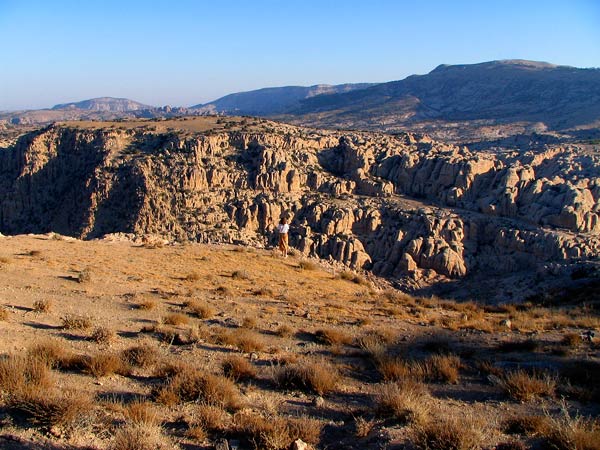
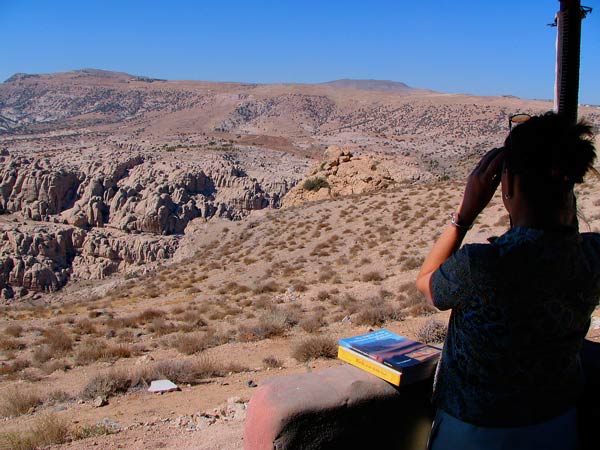

Nearby, life went on as it had done for thousands of years as herdsmen moved their flocks up and down the mountains seeking meagre pasture.

We weren’t just here for the view though. We were after some exercise and we certainly got it! We went on a seven hour hike down the wadis to the Dead Sea Valley. We had arranged transport with the brothers to take us to a spot near Shobak where we would start and then arranged a minibus to pick us up from the bottom. Although we would be following a small river the entire way we thought it best to take Ali with us to show us the way. A wise move I think. The start of the hike was stunning as we looked over the escarpment but soon we were descending into the Wadi, Wadi Ghuweir and the small trickle of water that we were to follow the entire trip. Actually, there is a great book that describes this walk and many other Wadi Walks in Jordan called "Trekking and Canyoning in the Jordanian Dead Sea Rift" interestingly written by an Israeli called Itai Haviv. I've also marked the trail on my interactive map for Jordan and it can be found on Google Maps.


The going was fairly gentle for the first hour or two and then became quite spectacular as we entered a series of narrow sided gorges or Siqs as they call them in these parts (just like that most famous of Siqs at Petra). We were glad of the shade provided by the steep sides as it was getting near noon and the temperature in the sunshine would be well over 40 degrees. There was not much water about when we went but Ali told us this was quite rare for usually on this trip there were sections when you had to swim.
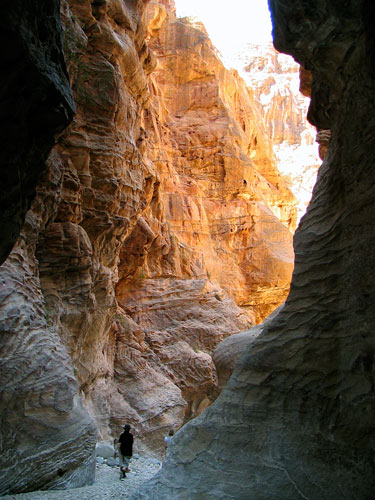
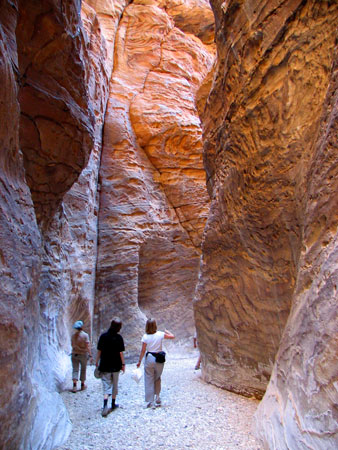

Halfway down we found a small waterfall. The temptation was just too much. That cool water felt soooooo good.

The wadi changed character a little bit further down. In addition to the stream, which actually disappeared underground for stretches, water was seeping down the sides of the canyon and so it was more fertile. Palm trees had sprouted through cracks in the canyon wall and there were even maidenhead ferns growing in places. It really did feel like we had landed in a tropical paradise.
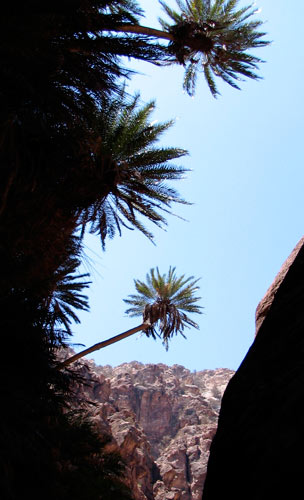
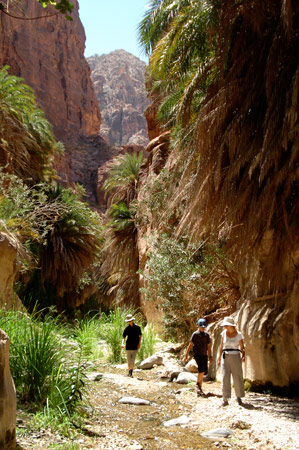
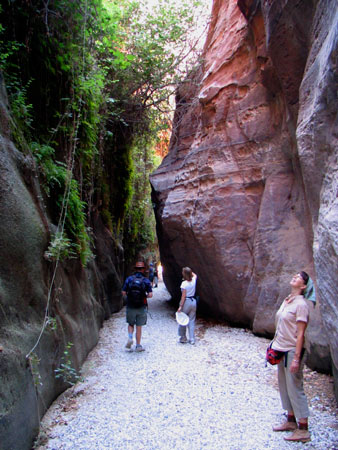
Another hour or so and there is another change. The Wadi broadens out a little at the confluence of Wadi Ghuweir and Wadi Hammam Dathneh from the north. At this point we are joined by a small range of rugged igneous hills such as Jebel Azwad (Black Mountain) which we can see below.
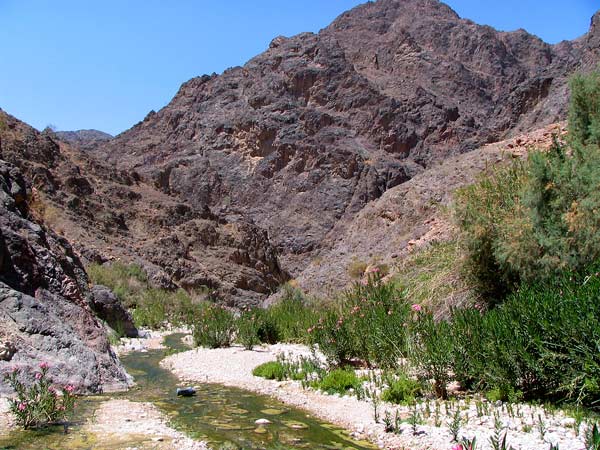
After an hour or so we leave Wadi Ghuweir behind to arrive at Feinan. For centuries this was the region's largest copper mine. Although mining stopped pretty much in Roman times, even now you can see huge mounds of slag – apparently 200,000 tons of the stuff. There are also some ruins nearby of the workings and the odd Byzantine church. It is also where the Wadi joins the Dead Sea valley and any shade is quickly left behind. We had arrived at about 4 in the afternoon but the heat was stifling. It really did feel like we were locked in a huge furnace. There were a few acacias hanging on but the surface was more like Mars than Earth.
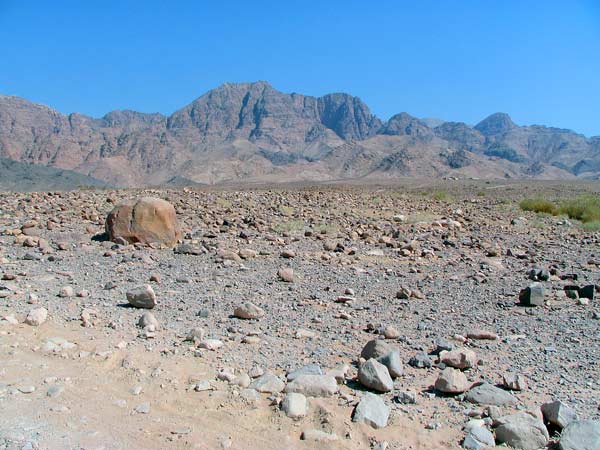
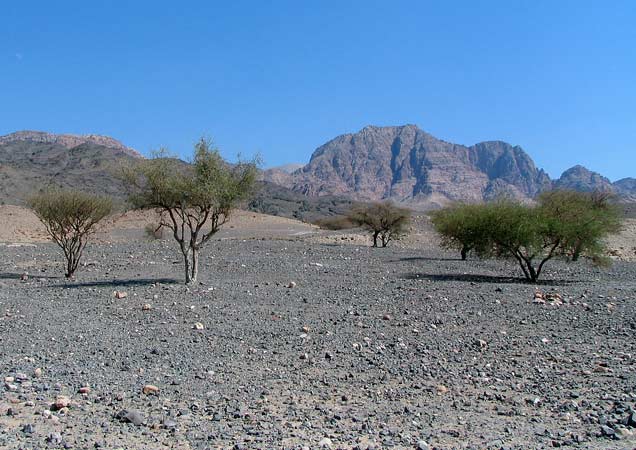

Fortunately after a km or two we saw a plume of smoke in the distance which eventually revealed itself as our rescue vehicle. We gratefully piled into the minibus for the trip home. It wasn’t to be a quick return however because we had come quite some distance in those few hours.
First stop was the scruffy hamlet of Qureiqira where we found a shop selling cold soft drinks and then along the Dead Sea highway until we reached the Taufila turnoff. From here the road climbed up the mountains. The road was steep here but the views were stupendous. It was only then we realised how far down we had come. It actually took us another 2.5 hours to get back to the camp and a quite divine cold shower.

That night we had a little celebration and a traditional Bedouin meal which had been baking in the sand for a couple of hours. Quite delicious!





